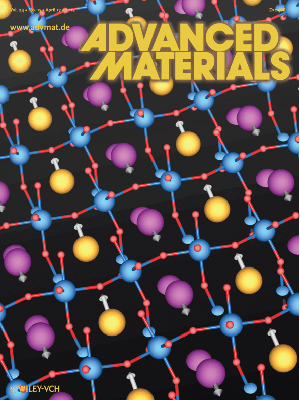Ferroelectric oxides do the twist
By Anne Ju

Some materials, by their nature, do what we want them to do -- notably, the ubiquitous, semiconducting silicon found in almost every electronic device. But sometimes, naturally occurring materials need a little nudge -- or in the case of recent Cornell research, a twist -- to make them useful.
Assistant professor of applied and engineering physics Craig Fennie and Drexel University's James Rondinelli have published a method for turning a class of ceramic materials called perovskites into a material that's ferroelectric. The work was published April 10 by Advanced Materials and also will be featured on the printed journal's inside cover.
Ferroelectricity is a property in which a spontaneous electric polarization can be flipped by applying a small electric field, useful for low-power memory and switching devices. Traditional ferroelectric mechanisms, however, are often chemically incompatible with such phenomena as ferromagnetism, limiting their use in new types of multifunctional devices.
The researchers' theory-only work, which employed density functional calculations, concluded that ferroelectricity in perovskites can be realized if their atomic structures are manipulated at the nanometer length scale and by slicing them only a few atoms thin, letting the natural twisting of their corner-shared octahedra -- the basic structural unit of perovskite crystals -- do the rest.
The researchers' engineered electric polarizations are the result of stacking chemically different perovskites into atomically thin striped-patterns, which allow their normal rotational patterns to induce ferroelectricity.
"In the past, those rotations and tilts didn't do anything, but by combining them in this way, they can be coupled to an electric field through polarization," Fennie said. "This is the first step in the broad field of using rotations that couple to an applied electric field to control the properties of materials."
Fennie and Rondinelli transformed their theoretical conclusions into experimental guidelines for chemists and materials scientists, with the goal of enabling ferroelectric materials by design.
"The strategy we applied in this work provides a framework for rapid materials discovery of functional properties in a variety of crystal families in advance of materials synthesis," Rondinelli said.
According to Fennie, the work illustrates that theory will play a pivotal role in identifying new material systems for integration into next-generation technologies; theoretical studies of materials are no longer limited to after-the-fact analysis of experimental data.
The research was supported by the U.S. Department of Energy, Basic Energy Sciences.
Media Contact
Get Cornell news delivered right to your inbox.
Subscribe